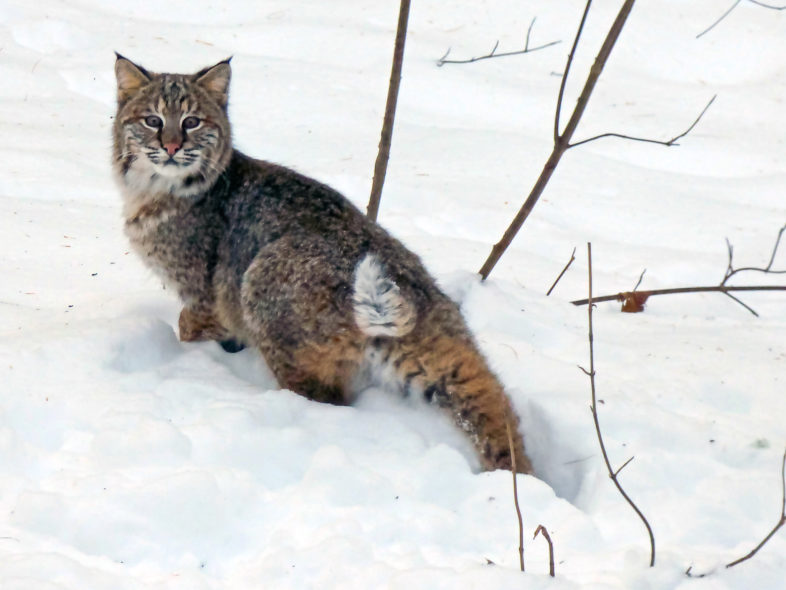Congratulations to Dean and Susan Greenberg for winning the December 2016 iNaturalist Vermont photo-observation of the month contest. Their image of a Bobcat (Lynx rufus) looking back at the camera was the most popular photo-observation as measured by clicked ‘favs’.
Bobcats are common throughout most of Vermont, although they are rarely seen due to their solitary and crepuscular nature. This one visited their bird feeder at dusk a week prior to this early afternoon sighting. “It chased a grey squirrel up a birch tree although it went up the tree a little it was not able to catch the squirrel. After turning to look at us (we were behind our patio door) it yawned then slowly went up the hill behind the house,” wrote Dean and Susan. Learn more about Bobcats from the Vermont Fish and Wildlife Department, view a map of bobcat observations in Vermont, and report your own to iNaturalist Vermont.
Visit iNaturalist Vermont, a project of the Vermont Atlas of Life, and you can vote for the winner this month by clicking ‘fav’ on your favorite photo-observation. Make sure you get outdoors and record the biodiversity around you and submit your discoveries and you could be a winner!


I’ve long been baffled by this idea that Bobcats are rarely seen. I’ve had 4 sightings at my house over the last 10 years — all in broad daylight at mid-day, btw — and that’s fewer than many of my friends and neighbors in nearby towns. These guys are around, and people see them regularly enough that a mention of my sightings provokes a polite smile and a stifled yawn.
If you don’t live in the middle of their territory, no, you won’t see them. If you do, you will from time to time.
A male Bobcat has a large territory, and within that are typically 4 or even 5 smaller female “satellite” territories. If you live within one of those male territories, as I do, you will see them not frequently but regularly in the daytime.
I’ve only seen the male once — a really magnificent creature — and the rest have been females, or maybe one female multiple times.